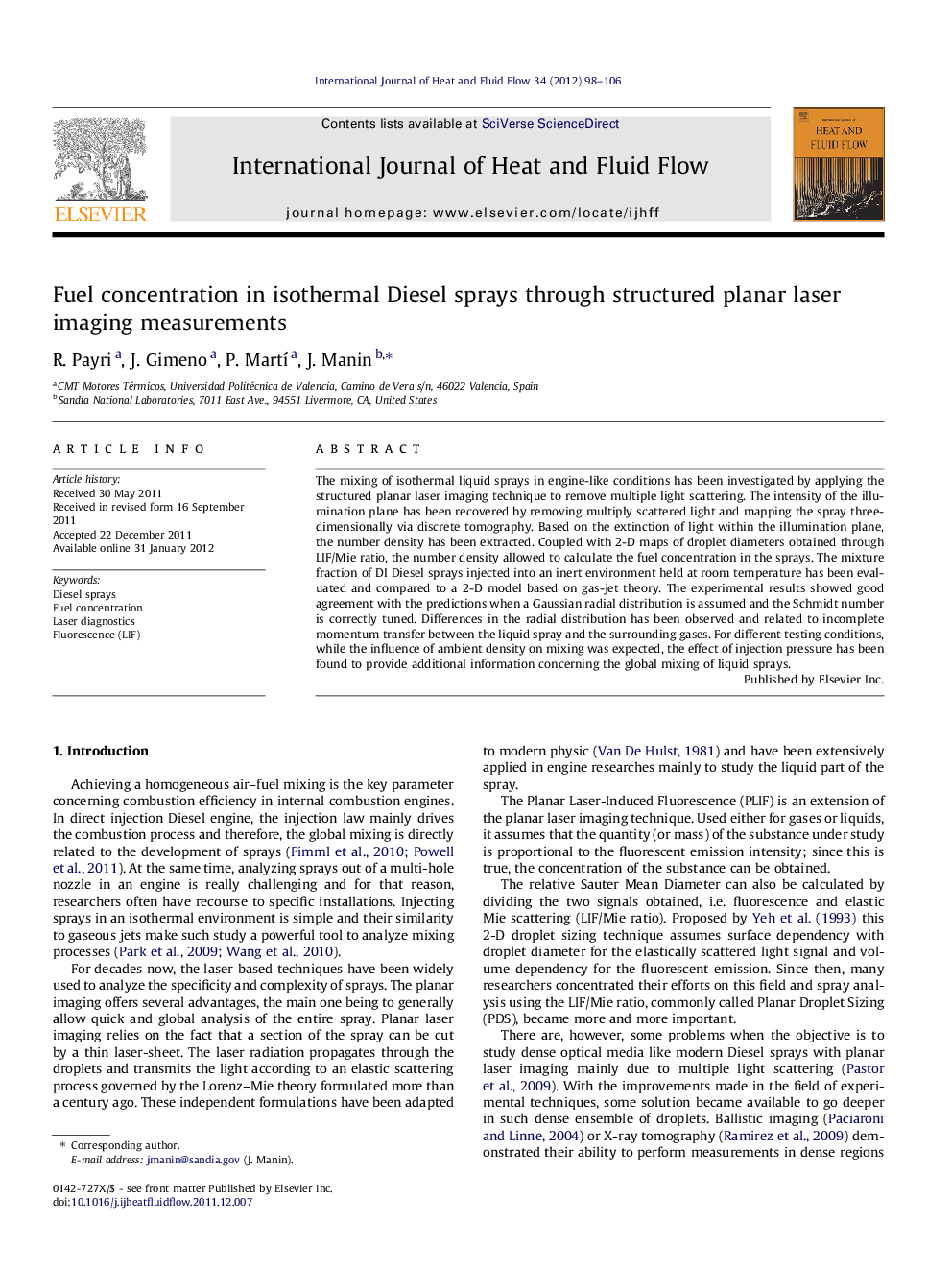| Article ID | Journal | Published Year | Pages | File Type |
|---|---|---|---|---|
| 655658 | International Journal of Heat and Fluid Flow | 2012 | 9 Pages |
The mixing of isothermal liquid sprays in engine-like conditions has been investigated by applying the structured planar laser imaging technique to remove multiple light scattering. The intensity of the illumination plane has been recovered by removing multiply scattered light and mapping the spray three-dimensionally via discrete tomography. Based on the extinction of light within the illumination plane, the number density has been extracted. Coupled with 2-D maps of droplet diameters obtained through LIF/Mie ratio, the number density allowed to calculate the fuel concentration in the sprays. The mixture fraction of DI Diesel sprays injected into an inert environment held at room temperature has been evaluated and compared to a 2-D model based on gas-jet theory. The experimental results showed good agreement with the predictions when a Gaussian radial distribution is assumed and the Schmidt number is correctly tuned. Differences in the radial distribution has been observed and related to incomplete momentum transfer between the liquid spray and the surrounding gases. For different testing conditions, while the influence of ambient density on mixing was expected, the effect of injection pressure has been found to provide additional information concerning the global mixing of liquid sprays.
► Structured illumination has been implemented to quantify mixing in isothermal sprays. ► Comparison to a gas-jet model conducted to Schmidt number below the unity (Sc = 0.8). ► Results showed incomplete momentum transfer due to velocity slip between droplets and ambient. ► Higher injection pressures enhance momentum transfer and lead to better global mixing.
